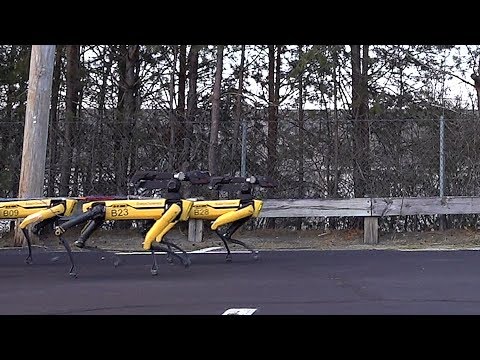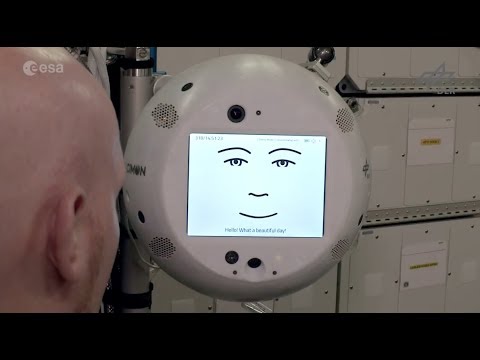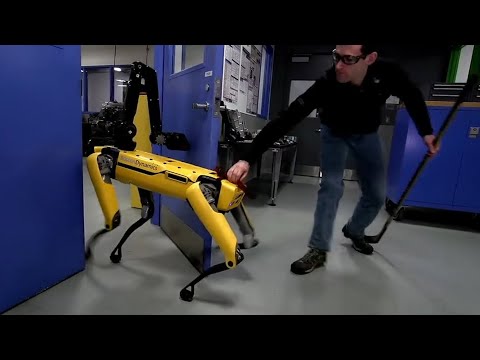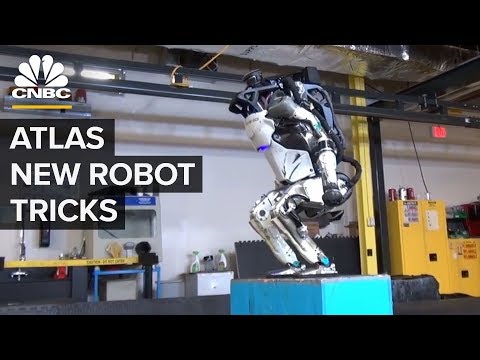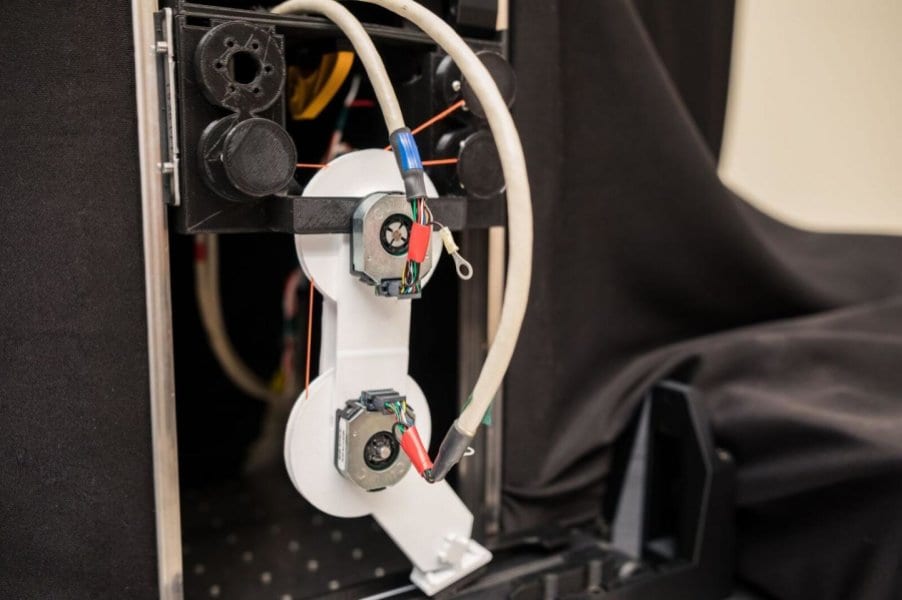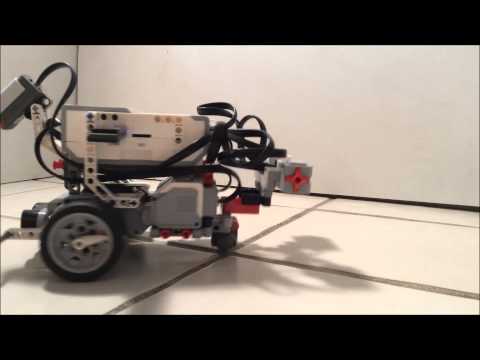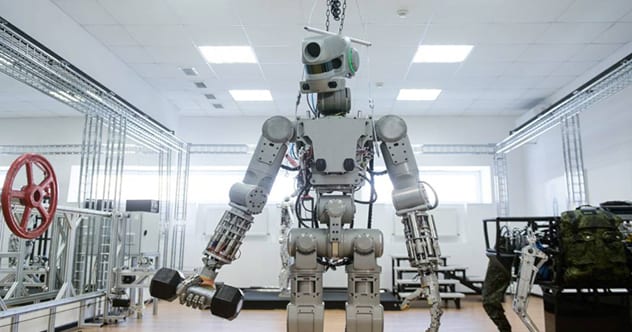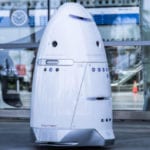SEE ALSO: 10 Interesting Facts About The Rise Of Sex Robots
10 Robo Roaches Are Here
Robots have adopted many qualities. But the survival acumen of a roach? The pests are already tough enough, but now they may have serious competition in a tiny machine. In 2019, the University of California turned out an invention that looks like a flattened strip. It weighs under a tenth of a gram and can zip along at 20 of its own body lengths per second. The rough resemblance and speediness are not the only reason why the robot is being likened to a cockroach. People step on roaches. So, the scientists stepped on their robot goober. Just like the real critters that sometimes survive getting a shoe in the face, the robot remains functional after a 60-kilogram (132-pound) person smooshes it into the ground. While it looks like one of the least favorite lifeforms on Earth, the invention has a noble purpose. The tough robot could perform search-and-rescue operations, searching for victims or assessing damage where larger machines and dogs cannot go.[1]
9 Truck-Pulling Dogs
Huskies can retire after this. The new powerhouse pulling human transport (although not sleighs) are robotic dogs. To be fair, they only have a rough resemblance to canines. The yellow and black creatures walk on four legs but have no heads. Which is not disturbing at all. In 2019, footage was released to showcase their raw power. Manufactured by Boston Dynamics, the robots were lined up in two rows and attached to a truck. All told, there were only 10 dogs and their slender frames invited doubt over the team’s ability to move the vehicle. The video showed the robots in a resting position before they stood up and started to walk. Unnervingly, their walking resembled that of an insect and not the smooth motion of a mammal. However, the yellow wonders did a great job. The SpotMini dogs, as they are called, casually pulled the truck up a hill at a one-degree angle.[2]
8 A Robot Told Off An Astronaut
CIMON was a floating ball meant to keep astronauts company. The orb came with a face and drifted through the International Space Station, looking for a chat. In 2018, footage was released of CIMON getting weird. The 5 kilogram (11 pound) head bobbed closer to Alexander Gerst. At first, it kindly assisted with a technical procedure. This was just one of its many useful traits, including taking photos, videos, explaining experiments and even looking for objects. Things went well until Gerst asked CIMON to play the song “Man Machine,” which was the astronaut’s favorite. The robot complied but became defensive when it was asked to stop the music. To the delight of other crew members, CIMON told Gerst to be nicer to him. The robot quickly followed this up by asking, “Don’t you like it here with me?” Then it told the man off again, saying, “Don’t be so mean, please.” Nobody can say for sure whether the robot glitched or truly got nippy for some reason. After all, its developers did try to install some personality in CIMON – although nothing like this was expected.[3]
7 Robots That Resist Human Interference
Remember the SpotMini dogs that pulled the truck? They can also resist humans. In 2018, a video showed a single SpotMini attempting to open a door. The experiment included a person who kept interfering by shoving its foot away from the door. Most robotics would cave to a human’s will. Not this 30 kilogram (66 pound) canine thingy. The footage showed something amazing. The SpotMini fought off the human, then opened the door. It even refused to budge from the door when pulled back by a leash.[4] Luckily, this is not the beginning of the robot uprising. The dog was not a deviant machine. Instead, it had been taught to resist due to its future occupation. SpotMini was designed to become a domestic helper and general assistant. In order to operate well, it needs to weather disturbances like kids and pets while carrying out tasks. This particular robot is already excelling in the home environment. SpotMini can amble upstairs, crawl under low spaces like tables, put away the trash, load dishwashers and even bring someone a soda.
6 The Foil Baby
In 2018, scientists made a baby. They created the robot by taking a normal doll, cutting it in half and attaching a bunch of wires to make it move. The result was a half-baby wrapped in foil with cables trailing from the back. The unsettling infant had a good purpose. The aim was to see what crawling babies breathed and if anything was hazardous. Indeed, this was the world’s first study attempting to understand indoor debris from an infant’s perspective. At Purdue University, it crawled on carpet strips taken from real homes. The robot stirred up debris while researchers recorded which particles were disturbed. Apart from dirt, there were pollen, bacteria, skin cells, and fungal spores. The tests showed that babies inhale four times more of this “carpet cloud” than adults. There is always the danger of an infant crawling on something dangerous like glass. But overall, the bits of dirt and organic matter identified by the study was not entirely a bad thing. Exposure could boost a baby’s immune system. However, the researchers admitted that more research is needed before the full impact of floor debris on children can be understood.[5]
5 Erica
Groomed in Japan to read the news on television, Erica is beautiful, young and very much an android. The benefits only serve the station and not the current news anchors. Besides the fact that she remains a perennial 23-year-old, the robot also cannot demand a salary or make mistakes during a live broadcast. Unveiled in 2018, her manufacturer claimed that Erica would eventually replace a human news anchor. She was “born” at the Intelligent Robotics Laboratory at Osaka University. Originally, Erica was designed to become a receptionist. At one point, her skill set must have made the designers aware that the robot was destined for greater things. Thanks to speech algorithms, Erica can hold a conversation with a human. According to those close to her, the robot is quite charismatic. She also recognizes faces, recites information and sits comfortably in a chair. Moving facial features, neck, shoulder and waist add more life-like touches to the android. Everyone is crossing their fingers that Erica would stay tactful and avoid turning into another Sophia. The latter is also a life-like robot. She was granted citizenship by Saudi Arabia for her intelligence but during one interview, when the issue of creepy human-like robots came up, Sophia told the audience that if she were indeed creepy that they should just “Get over it.”[6]
4 The Unsettling Atlas
Atlas is the brainchild of Boston Dynamics. The humanoid machine became infamous after footage was released that showed the machine enjoying a jogging session. The movements were so human-like that it managed to freak out the Internet. In 2018, Atlas aced another trick. This is something many people wish they could do because it looks so awesome – parkour. A new video showed the robot nimbly leaping over obstacles and between platforms. Freakishly, it did so without slowing its pace. Atlas is also known for doing backflips and righting itself – like a person – after being shoved. What is the purpose behind what Boston Dynamics call the “world’s most dynamic humanoid?” Apart from pushing the limits of robotics that imitate humans, Atlas is destined to serve in disaster situations. Needless to say, the dark side is just as obvious. Should Atlas receive a few more tweaks in the right direction, an army of these creepy robots could appear like something out of a nightmare. Even just one of them chasing tirelessly after you over any terrain is a frightening thought.[7]
3 A Psychic Robot
Mention a fortune-telling machine and most people might think of a glass booth in Vegas. The kind with a doll inside promising love and wealth for a dollar. The University of Illinois invented a “psychic” robot but this one was different. For starters, it cannot give the winning lotto numbers. But it can predict a person’s movements, even when the motion was interrupted. Meant to push the red button but barely made a move? The robot knows. Going to turn the steering wheel? It can predict a left or right turn before a human passenger can. There is nothing supernatural about the machine. In 2015, the researchers released an algorithm that allowed the robot to read the fractional moment that is a delay between the brain, eye, and hand. This also gave it an uncanny ability to correct somebody. Future applications could be life-saving. The technology could correct a driver’s accidental swerve or help pilots who struggle with steering during a tough situation. Mainly, the algorithm was developed to give patients with brain injuries a better life. For instance, one day a robot assistant or prosthesis could complete a movement the person tried to make.[8]
2 Robots That Teach Themselves
In 2019, the University of Southern California made an exciting breakthrough. The team created a robotic limb controlled by artificial intelligence. But that was not the reason why the moment was champagne-cork wonderful. The leg had taught itself to walk. This occurred during a stage that, in robotics, is called “motor babbling.” Babies babble to figure out language. Similarly, trial and error teach robots more about the world around them. This process usually takes months, but a new algorithm allowed the leg to test random commands to get a feel for its own joints. In a time so short it was almost creepy – five minutes to be exact – the limb began to walk without being shown how. The algorithm was designed to give robots a natural ability to adapt by forming memories of their bodies and environment. In their own special way, this flirts with the line of evolution for machines. Several of the robots tested by the university even developed their own personality. Some walked with zest, others were more dainty or lazy. This was a remarkable feat. The technology could enhance robotics in several ways. Prosthetics can react more intuitively while entire robots can perform missions from rescue to space, learning within minutes to adapt to new challenges they might encounter.[9]
1 Lego With A Worm’s Mind
In 2014, a toy wheeled around in a laboratory. To the casual observer, it looked like a Lego vehicle of some sort. While it was indeed a LegoBot, the robot was far from pedestrian. Scientists had given it the mind of a worm. The brain’s electrical signals can be written in digital code. Inherently, this means that one’s brain could get uploaded to a computer. At the moment, a slew of ethical barriers prevents a human-to-machine transition. Nobody objected when a worm’s mind took the leap. The lucky species was Caenorhabditis elegans, a type of roundworm. It was chosen for its well-documented genes and nervous system. The worm had 302 neurons, which were mapped and simulated with the help of software. This program was then installed inside a Lego robot. The merge was so successful that the worm’s body and mind had robotic equivalents. Incredibly, the LegoBot showed roundworm behaviors when none were programmed into the robot. This weird invention could refine the science of simulating brains to create better artificial intelligence in the future. Of course, to also pave the way for the first human-to-machine transfer once the ethical storm is sorted out.[10] Read More: Facebook Smashwords HubPages

